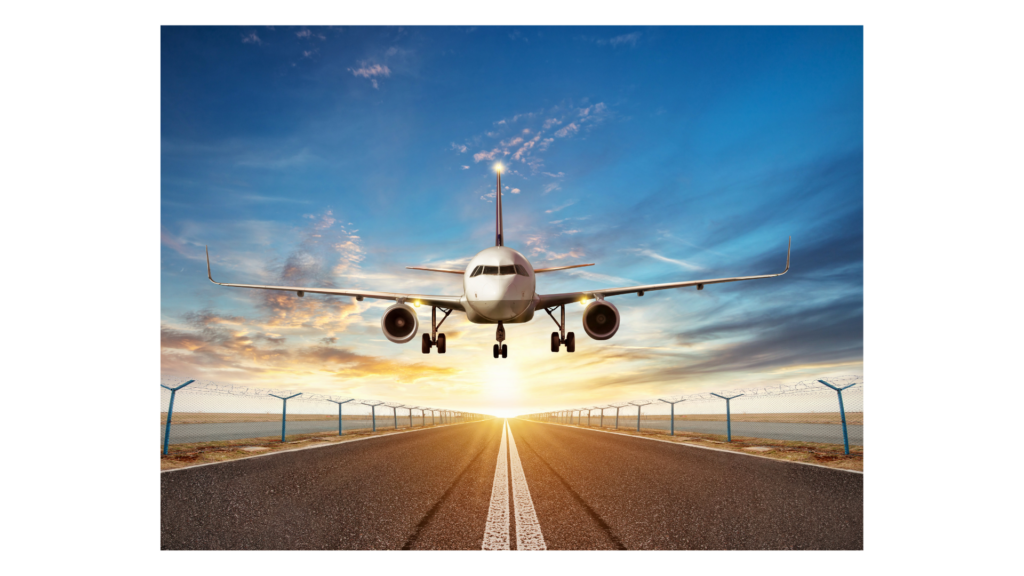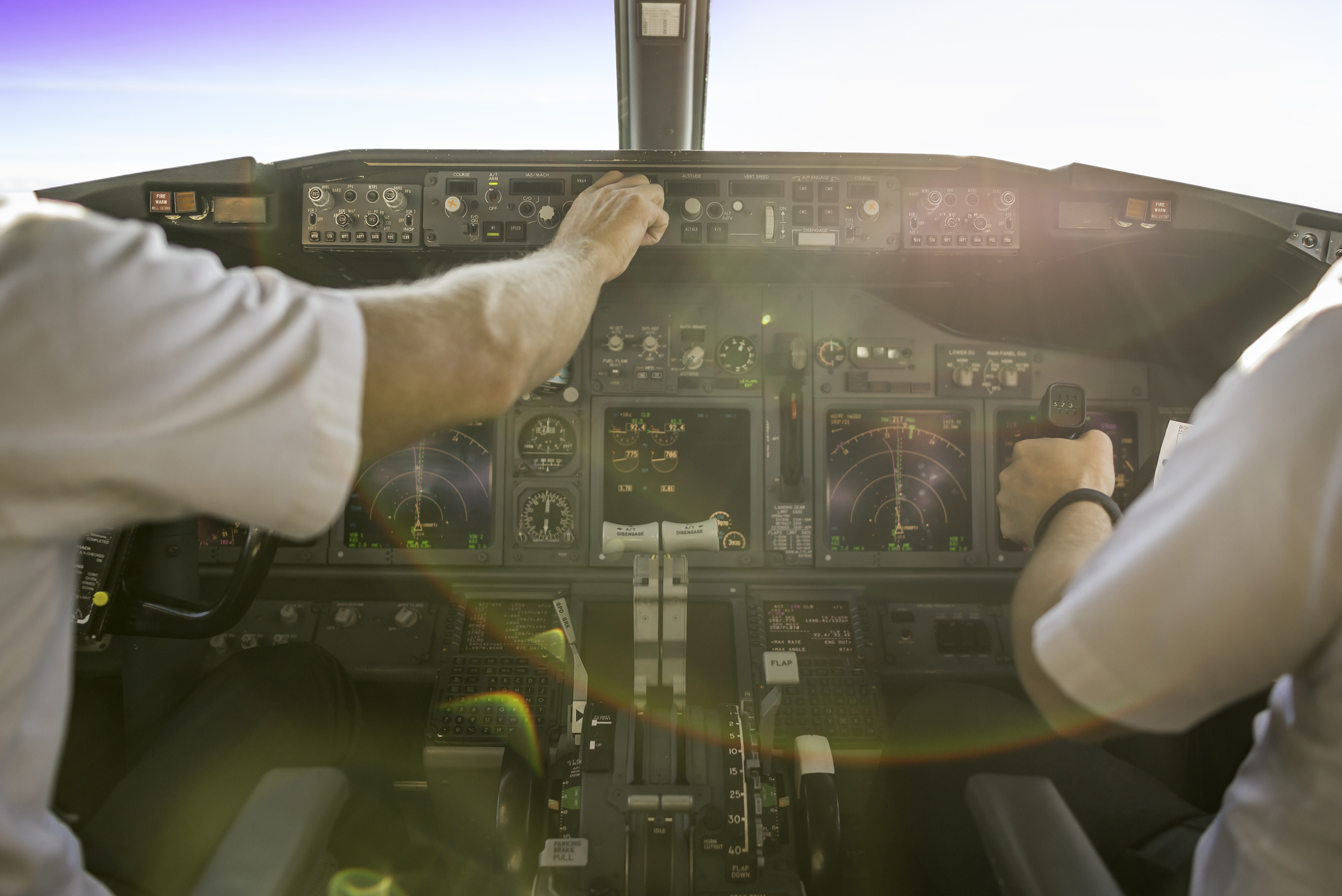Many English-speaking people think that “V” stands for Velocity, which is generally correct. But another French aviation phrase, “Vitesse” – which means “speed” – is represented by the letter “V” in V-Speed.
The FAA requires that aircraft manufacturers provide certain V-speeds to ensure the safest and most efficient flow of air traffic. They are standard aviation terms used to identify the critical operational airspeeds for various phases of flight. V-speeds are valuable tools that help pilots responsibly and effectively operate their aircraft.
V-Speed for Takeoff

V1 = Takeoff Decision Speed
V1 refers to the maximum speed at which the pilot can stop the aircraft on the runway in case of a canceled takeoff, after acceleration.
The bigger the plane, the higher the V1, since the airspeed depends on weight.
However, aircraft weight is not the only factor to consider; there is also the weight of the cargo, the configuration of the airplane, runway slope, wind speed, and temperature (including the presence of rain or ice).
V2 = Takeoff Safety Speed
If one engine fails (in a multi-engine aircraft) during takeoff, V2 is the speed at which this disabled aircraft can still safely climb. V2 will vary depending on the position of the flaps at the time of the engine malfunction.
VMC = Minimum Control Speed
The minimum speed at which an aircraft can maintain controlled flight with one engine inoperative. This speed is crucial for multi-engine aircraft, as it helps to ensure that pilots can maintain control of the aircraft even if an engine fails. In a twin-engine airplane, for example, if one engine fails, the other will produce thrust asymmetrically, causing the plane to yaw towards the dead engine.
VMU = Minimum Unstick Speed
VMU, standing for Minimum Unstick Speed, is a term in aviation that defines the lowest speed at which an aircraft can safely lift its nose wheel off the runway during takeoff.
This is a crucial element in flight operations as it represents the minimum velocity necessary for an aircraft to transition from ground movement to airborne flight.
VX = Best Angle of Climb
Vx is the maximum altitude gain in the shortest horizontal distance (knowing this metric is the key to calculating this speed). Pilots use VX to avoid obstacles such as tall buildings or cell phone towers.
VY = Best Rate of Climb
VY is the speed that provides the best rate of climb and maximum altitude gain in the least amount of time, used to clear the airspace as quickly as possible.
VR = Rotation Speed
This is a critical concept in the realm of flight dynamics, and it pertains specifically to the velocity at which the pilot initiates a series of control inputs to maneuver the aircraft’s nose to pitch upwards.
VLOF = Liftoff Speed
It’s an essential metric that indicates the exact speed at which an aircraft is capable of becoming airborne and commencing its flight.
This speed isn’t a constant for all aircraft. It varies depending on numerous factors, such as the type and model of the aircraft, its weight, the altitude of the airport, the length and condition of the runway, and the prevailing weather conditions.

V-Speed In Flight

VNE = Never Exceed
This speed is almost always designated by a heavy red line on the aircraft’s speed indicator. Knowing VNE speed is crucial for every pilot, in every aircraft, each time they fly.
Exceeding this airspeed will result in probable structural failure.
VNO = Safe Structural Cruising Speed
VNO is the top limit of the arc represented in green on the airspeed indicator and shows the maximum speed at which you may safely fly in calm air with no turbulence.
If the aircraft begins to drift above VNO and approach VNE, the needle will move into the yellow arc, or “caution range.”
VA = Design Maneuvering Speed
This is the maximum speed for an aircraft in flight during turbulence or heavy wind gusts. The manufacturer usually determines this speed based on the maximum gross weight of the aircraft. However, the VA changes when the plane is being operated at less than max gross.
For this reason, it is a critical safety issue to understand how to calculate this speed based on the actual aircraft weight.
VMAX = Maximum Structural Cruising Speed
VMAX refers to the maximum speed at which an aircraft can safely operate under normal conditions. This term is often interchangeable with VMO (Velocity Maximum Operating) or MMO (Mach Maximum Operating).
VMO is the maximum operating speed at sea level. This limit is set by manufacturers to prevent structural damage and to ensure the safe operation of the aircraft.
V-Speed During Landing

VFE = Maximum Flap Extended Speed
When flying with the flaps fully or even partially extended, there is a risk of damaging or even destroying one or multiple flaps if you let your speed get over VFE.
Maximum Flap Extended Speed is specific to each flap setting. On an airspeed indicator, VFE is sometimes marked at the top of the white arc.
VS / VS0 = Stall Speed (Minimum Speed) in Clean/Dirty Landing Configuration
Pilots extend the flaps of the airplane to create an increase in drag, which slows the aircraft in preparation for landing. But how will the pilot know how slowly the aircraft may go before it stalls?
VS is the stall speed of the aircraft in clean configuration – while the landing gear and flaps are still up.
VS0 is the stall speed of the aircraft in landing configuration, meaning the landing gear and flaps are down (sometimes referred to as dirty configuration).
VAPP = Approach Speed
Represents the specific speed at which an aircraft must maintain during the critical phase of approach to landing until it reaches the threshold of the runway.
This speed is not random or arbitrary, but rather a carefully calculated value that is typically set slightly above the VREF, or Reference Landing Speed. The reason for this is to establish a safety buffer.
VREF = Landing Reference Speed
It is typically the speed at which a transport aircraft is flown during the final stage of its approach to landing. The VREF is usually set at 1.3 times the VS0, also known as the stalling speed or minimum steady flight speed at which the aircraft is controllable in the landing configuration.
VLE = Maximum Speed
The maximum speed at which an aircraft can operate safely with its landing gear extended. It is a crucial parameter in aviation safety as exceeding this maximum operating speed could potentially cause significant damage to the landing gear and jeopardize the aircraft’s safety.
Pilots must be fully aware of and adhere to this speed limit when flying, particularly during descent and approach for landing.
In essence, VLE is a critical speed limit that ensures the safe and efficient operation of an aircraft when the landing gear is deployed.
Where Are These V-Speeds Displayed?

It is an airworthiness regulatory requirement to represent these V-Speeds in the most direct possible way in the cockpit. Direct display of essential V-Speeds on the flight instrument dial is done to meet this regulatory requirement.
On the front of an aircraft’s airspeed indicator, color-coded arcs and lines represent the most regularly utilized and safety-critical airspeeds. Wing flaps are extended at the lower end of the white arc and retracted at the lower end of the green arc, respectively. These are the airplane’s maximum weight stall speeds.
When flying in calm air, the airplane may be handled inside the yellow band but only with extreme care to prevent sudden control movements, and the red line represents the VNE, or maximum permitted speed.
There are many other V-speed terms used in aviation. The pilot shorthand list above contains just a few of the most frequently used terminology.
Are V-Speeds Standardized Internationally?

V-Speeds are indeed standardized internationally. They are standard terms used to define airspeeds that are important or useful for the operation of all aircraft. These speeds are derived from data obtained through rigorous testing and are crucial in ensuring the safe and efficient operation of the aircraft.
It’s important to note that while the concept of V-Speeds is standardized, the actual speeds themselves can vary greatly between different types of aircraft. The specific V-Speeds for an aircraft are determined by the aircraft’s manufacturers through extensive flight testing and can be found in the aircraft’s flight manual.
Learn More About V-Speeds At California Aeronautical University
V-speeds are a critical aspect of aviation that greatly influence the safety and efficiency of flights. They represent various critical speeds during different phases of flight and help pilots make informed decisions about taking off, cruising, and landing.
Understanding V-speeds allows pilots to maximize aircraft performance while minimizing risk. Each aircraft has its own unique set of V-speeds depending on its design, weight, and other factors. Therefore, it’s imperative for pilots to familiarize themselves with these values to ensure safe and efficient operations.
Overall, V-speeds are an essential part of flight dynamics and aircraft control. If you are interested in learning more about flying, being a pilot, or anything else related to aviation, please contact California Aeronautical University for further information.
Ready to soar in your aviation career?
Mr. Matthew A. Johnston has over 23 years of experience serving various roles in education and is currently serving as the President of California Aeronautical University. He maintains memberships and is a supporting participant with several aviation promoting and advocacy associations including University Aviation Association (UAA), Regional Airline Association (RAA), AOPA, NBAA, and EAA with the Young Eagles program. He is proud of his collaboration with airlines, aviation businesses and individual aviation professionals who are working with him to develop California Aeronautical University as a leader in educating aviation professionals.
